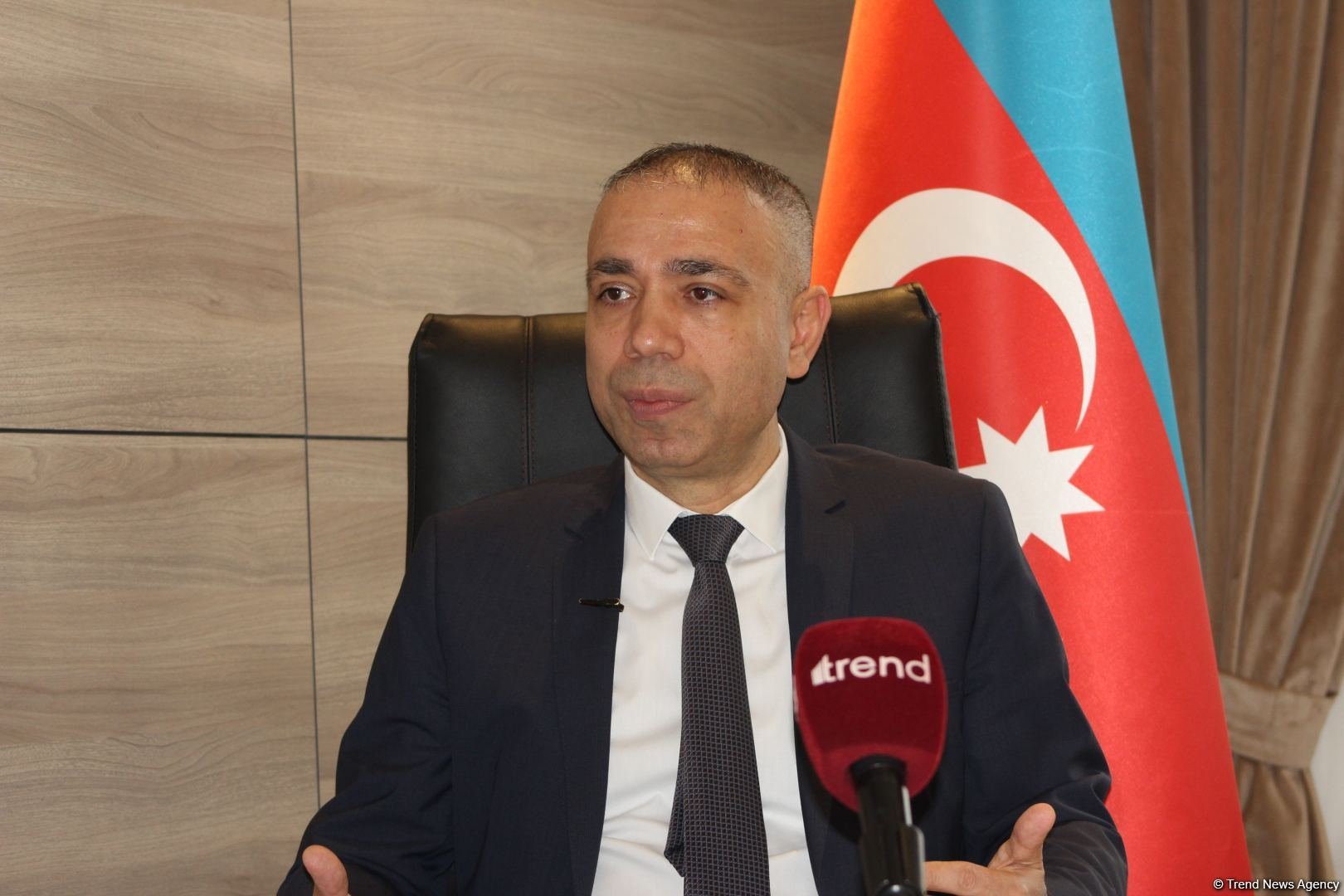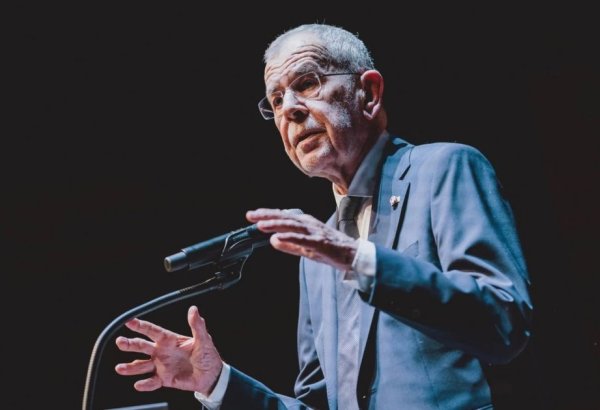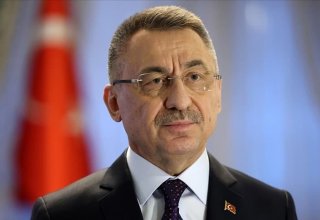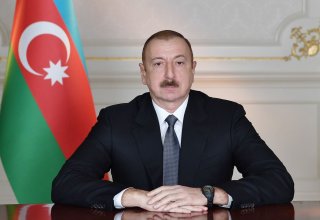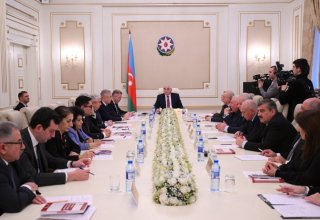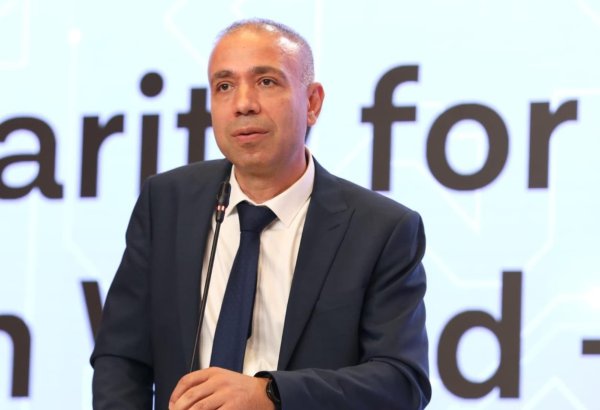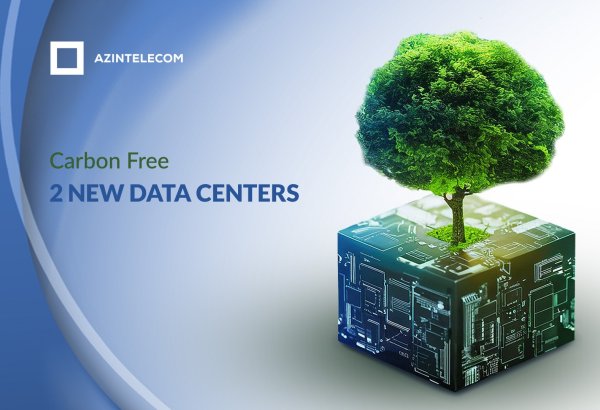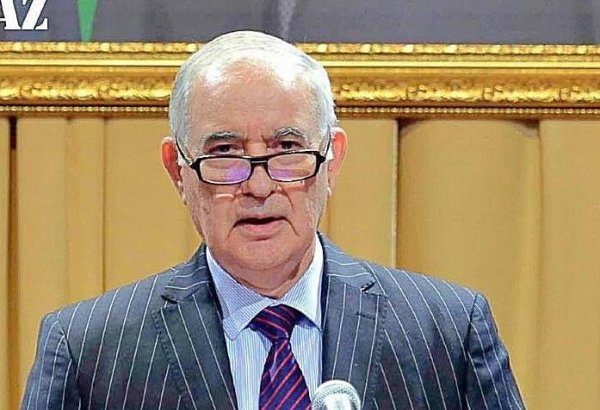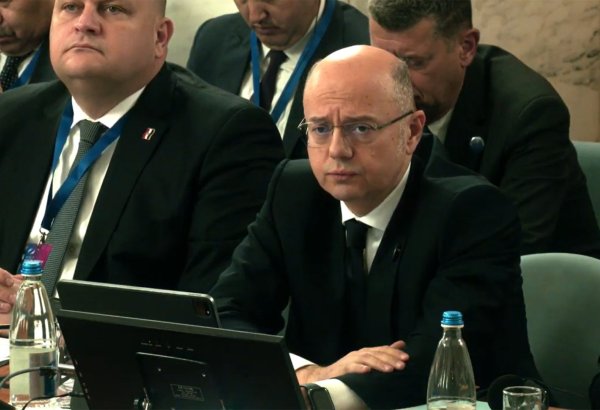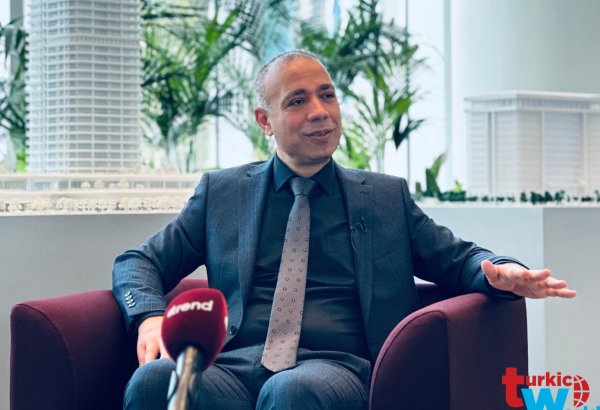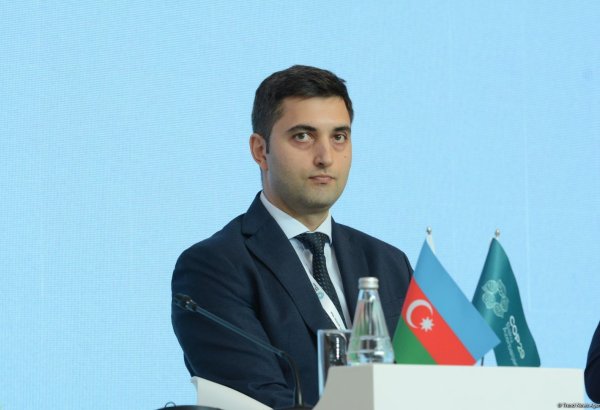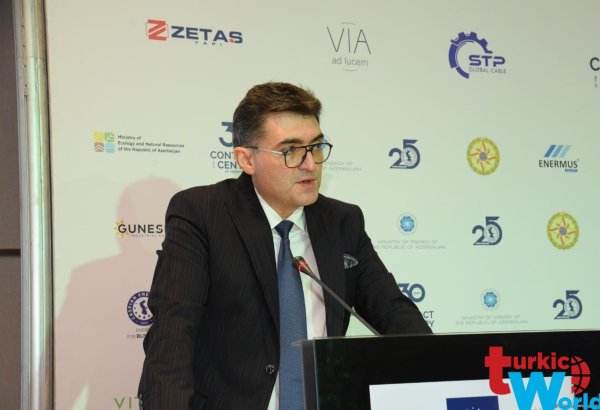BAKU, Azerbaijan, February 8. Azerbaijan is working actively in different directions to boost its energy supplies to partners, both securing their energy security and strengthening its own economy, Elnur Soltanov, Deputy Minister of Energy of Azerbaijan told TurkicWorld in an exclusive interview.
Green energy "corridor" as analogy to Southern Gas Corridor
Azerbaijan has been a reliable partner in terms of oil and, recently, in terms of gas. Most of the oil that Azerbaijan is exporting is going in the European direction. The same thing is with natural gas. We plan to basically double our gas exports to the European market by 2027. Azerbaijan is already exporting more than 10 bcm to Europe – in 2022 it has been 11.4 bcm. This year, we plan a similar volume of gas to the European countries. And again, this is on top of what we are exporting to Georgia (2.8 bcm in 2022), and Turkiye (8.4 bcm). So, combined, we have already exported 22.6 bcm. In 2023 the total export volume is expected to exceed 24 bcm.
As you know, for a couple of years now, we have been holding the Advisory Council meetings of the Southern Gas Corridor (SGC) in February. This year, we have simultaneously held the 9th Ministerial Meeting of the Advisory Council the SGC, and the 1st Ministerial Meeting of the Advisory Council on Green Energy.
Regarding the recent agreement signed between Azerbaijan, Georgia, Hungary and Romania to build a cable under the Black Sea - this can very well go beyond the countries that already signed this document, because electricity connectivity all over Europe is quite advanced, and when someone enters Europe’s grid system the electricity produced in Azerbaijan can end up in any part of Europe, but the source will be Azerbaijan's renewable energy.
However, this undertaking requires a very thorough analysis. There was the idea to connect Georgia and Romania, and we have shown interest in this project from the beginning. But then, as we are discovering our vast offshore wind resources, we understand that the initially planned connection may not be enough. A much bigger transmission capacity had to be developed in order to connect Caspian to the European countries. And, again, the choice of Romania is about our great partnership, and also, to a certain extent, this choice is determined by geography, because, Romania, given the Black Sea environment, becomes one of the best candidates, and Hungary is basically a gateway to the entire Europe. Again, as we have signed this document, all European countries are our potential partners - this is the basis of our strategic vision.
Ways for Azerbaijani green energy to reach Europe
Azerbaijan is exporting electricity to European countries as well, but the main countries have been Georgia and Türkiye, and the major connection that we have in this direction is the lines that goes to Georgia, and then - from Georgia to Türkiye.
There are a lot of technical issues as well, because Georgia and Azerbaijan are synchronized, which means that exporting electricity or trading electricity between these two countries is technically easier and cheaper, but Türkiye is in a different zone, which requires more expensive connection infrastructure, increasing the cost for the producer, but still, there is a connection and we are basically exporting around 300 MW to 400 MW of electricity to Türkiye.
The document that we signed with the European Commission in July, however, talks about two electricity corridors: one of them through Black Sea, which really becomes a natural corridor between Caspian and European countries, and the other one is through Nakhchivan to Türkiye and the rest of Europe, which, basically, is an element of the Zangazur corridor.
In that direction, we are already building 330 kVt substation in Jabrayil region. Why is it important? Because Azerbaijan’s electricity grid is based on substations with the same type. And by building in Jabrayil that kind of station means that eventually we are planning to build another one in Nakhchivan, connecting our exclave to the main land, and which will be connected further to Türkiye, and eventually to European countries. It will give us an ability to export around 1,000 MW of electricity, and this is a huge number. This is more than what we are exporting today. But, at the same time, it also increases the reliability of electricity system in the liberated territories, so we are doing two things with one project. Moreover, this substation will also be important in terms of the construction of solar power station that we are working on with BP in Jabrayil region, so perhaps three major issues are solved with one project.
I want to point out that we are not planning to export just any kind of electricity - the main source of electricity we are planning to be exporting through these lines, probably and hopefully all of them – is going to be green electricity. This is what Europe needs, this is what the world needs, and this is what Azerbaijan needs for several reasons, one of them being the fact that in Azerbaijan, unlike many other countries, also European countries, most of electricity is produced by burning natural gas - around 95 percent. In many European countries they do not do that, because gas is very expensive, and they use much dirtier coal instead. So, using natural gas is good for the environment, this is our contribution to world climate mitigation, but at the same time it costs Azerbaijan very valuable commodity, which can be exported and earn a lot of hard currency. So, by reliance on green energy, we will be saving quite sizable amounts of natural gas, which could be exported, bringing additional revenue to the country.
Azerbaijan is about to hold the first auction for renewable energy projects
This process is about to be finalized, we were actually planning to hold the first auction in the first half of 2023. We already defined the area where it’s going to be realized; probably it will be a solar site at first, but eventually wind power plants will be considered too.
The issue is that in Azerbaijan energy prices are relatively low, and, therefore, when sites are smaller, investors are not able to capitalize on economies of scale, and matching the tariff prices in our country becomes very difficult for them. So far in our agreements with Masdar and ACWA Power, we have been able to remain within the framework of the prevailing tariffs in the country, which is around 3 cents. And this is really a good price, but if the sites get smaller then prices go up. So we need to find a right balance here.
Azerbaijan chose to go a different road. We technically held a very transparent selection process, as a result of which we granted a 230 MW solar power plant to Masdar, and 240 MW wind power plant to ACWA Power. We made it clear to all competing energy corporations that the main selection criteria is the tariff offer they are to make, other things being equal. And it is on the basis of this criterion that we eventually chose Masdar, ACWA Power and BP, and every other participant knew this.
So there are different legitimate selection processes. Holding auctions has always been a part of the plan and we are very glad that we are getting close to realizing that option too.
Prospects for the production of green hydrogen in Azerbaijan
I personally participate in the meetings with the European Bank for Reconstruction and Development (EBRD) regarding the hydrogen report for Azerbaijan. This is also important because it is one of the deliverables of the state strategy for 2022-2026, stemming from national priorities for social economic development. Hydrogen is quite expensive and the most important version of it, green hydrogen, is the most expensive type of hydrogen. Hydrogen could be produced from methane, and the required energy may or may not come from fossil fuels – in short, there are a lot of types and colors of hydrogen. I remember in our discussions with the EBRD, where they focused somehow on blue hydrogen a little more, which is about basically using natural gas capturing the most unwelcome byproduct - carbon dioxide. It is an appealing idea especially because we have both abundant natural gas as well as depleted oil and gas fields where the captured carbon dioxide could be stored. However, we want to focus on the production of green hydrogen, the cleanest form of it, produced by using water, and, as a source of energy, renewable energy. This is the most expensive way, but this is a future, and this is where we want to go. Currently, we are on a very important stage of the feasibility study.
Agreements with Masdar and Fortescue Industries involve the development of vast renewable energy sources, including offshore wind in the Caspian. We believe that in projects of such scale the production of hydrogen could make economic sense, including with regard to balancing issues. Given the specifics of some projects, using hydrogen can actually bring down the overall cost for them. So, there are certain niches to exploit.
The EU is mainly interested in green hydrogen. Some of the potential investors in Azerbaijan have already defined this field as one of their priorities. So, there are interesting synergies here. Of course, this is a very complex and expensive issue, but we are keeping our options open.
Untapping vast offshore wind potential on the Caspian
The Caspian has been a source of inspiration for Azerbaijan, a source of income due to its fishery resources, and then it became important because of Oil Rocks in 1950s and world-famous Azeri-Chirag-Gunashli field in the 1990s, and then one of the biggest gas fields in the world - Shah Deniz has been discovered there. Now it is really a blessing that the same Caspian is found to have a huge potential for offshore wind energy development.
Preliminary research says that technical potential for offshore wind is 157 GW. As projects develop, we will have more concrete figures. In any case, we believe that, and the preliminary research shows the same, that we have more offshore wind than we will ever be able to utilize domestically.
We have already signed relevant deals with Masdar and Fortescue Industries on the total installed capacity of 22GW. For comparison, the entire installed capacity of power production in Azerbaijan, including all renewable and non-renewable, is 8 GW. Out of those 22 GW, about 16 GW account for offshore wind energy production. We have also signed an agreement with ACWA Power on the construction of an offshore wind farm.
There are many factors we have to take into consideration. But the most important issue with offshore wind is that it is more expensive than onshore wind, or solar power. And we have to figure out how to solve this problem. The thing that does not help is the fact that Azerbaijan is a landlocked country. The planned wind turbines are huge. We are talking about the length of a single blade that reaches about 100 meters. And, unless you produce them domestically, you will have to mainly rely on Volga-Don Canal to bring them in, and the current war that is going on does not help either. Bringing them over land is possible but technically challenging. So, we are really thinking about maximizing the domestic production, which will help mitigate the consequences of being landlocked.
There are great challenges and opportunities, and together with our partners we plan to achieve great results.
240 MW "Shafag" (Sunrise) solar power plant in Jabrayil / Zangilan zone - result of fruitful cooperation with BP
The area around 900 hectares in Jabrayil region has been cleared of mines. In some places the area had to be cleared of mines to the depth of 4 meters, which is a lot, and very few devices in Azerbaijan can do that. The demining has been a big challenge, but the Azerbaijan National Agency for Mine Action (ANAMA) has done a great job. We also had to make sure that this land is not useful for agriculture, thus, there are other projects that we have to align ours with. In any case, we are glad that BP affiliated technicians are expected on the ground in February.
The most exciting part about BP’s project is the fact that it is kind of a "virtual" power plant. It is envisaged that the green energy produced in Karabakh will be delivered to Absheron, to oil and gas processing terminal, and decarbonize the process.
Oil and gas processing is a very energy intensive process, and usually the electricity required is obtained by burning fossil fuels quite inefficiently. By decarbonizing this process, BP and its partners, including SOCAR and Azerbaijani Government as a whole, could potentially avoid certain taxes in export to be imposed in Europe. Needless to say, this is great for the environment, and saved gas gets back to shareholders, which could be a source of additional revenue.
There is also a great symbolism, since, if a corporation of the caliber of BP is investing in Karabakh, it means that the peace achieved in the region is there to stay. This is also a signal to the global corporations that it is safe to invest in the liberated territories of Azerbaijan.
BP’s presence in Azerbaijan in the 1990’s played its role in terms of strengthening our sovereignty, and a similar process is now happening in terms of reviving the liberated territories. We expect that in about 2 years’ time renewable energy will be produced on this plant.
Our doors are open to any partner willing to invest in Azerbaijan’s green energy sector. The initial list of the companies eager to participate was much larger and we continue the dialogue with many of them to this day. The auction process will also help in terms of revealing the real interest in this regard. In time you will be hearing about new projects. For instance, one European corporation is also interested in the realization of a project, similar to what BP is carrying out in Jabrayil, a kind of a "virtual" plant.
Expanding solar power production beyond land
A project of floating solar power plant with a capacity of 100 kW, implemented as part of the "Knowledge exchange and technical support for the development of floating solar panels" pilot project implemented with support of the Asian Development Bank (ADB), is already in the making. This is a part of technical support from the ADB, so we are not investing anything. The aim of this pilot project is to understand pros and cons, and lay the ground for the expansion of this initiative into 50 MW power plant.
More on cooperation with Arabian partners
An ongoing 230 MW Garadagh solar power plan project with the UAE’s Masdar, as well as a 240 MW Khizi-Absheron wind power plant, developed by Saudi Arabia’s ACWA Power will produce electricity quite soon. The electricity from the Garadagh plant will be produced in coming months. Offshore wind development will take a little more time. These two projects reflect the trust between the leaderships of Azerbaijan and the UAE and Saudi Arabia.
We are very glad that SOCAR is entering this agreement with Masdar as an economic partner, becoming part of the deal in its own quest to become an energy company of the 21st century.
Following the path of the forefathers in exploring new endeavors
We are moving along the path of our forefathers who started the oil journey of Azerbaijan about 170 years ago, and giving our country a progressive push that continued for decades resulting in much more than the production of oil.
In the early 1990s, late President Heydar Aliyev did something unthinkable, realizing unimaginable. As a result, Azeri-Chirag-Gunashli (ACG), as well as Baku-Tbilisi-Ceyhan (BTC) became realities, which was something much beyond oil; a window to the outside progressive world, an anchor of our sovereignty. In hindsight, what happened may look like inevitability, but every single aspect of it was as a result of sleepless nights, endless hours of hard work and phenomenal will and capability of the leadership of Azerbaijan.
Then, in 2000s we witnessed, how the success in our oil saga has been repeated in terms of our natural gas. There were a lot of naysayers, many disagreed, but President Ilham Aliyev pursued the policy in a determined and well-calculated manner, and time is proving that this has been a visionary path, placing Azerbaijan at a center stage of debates about European energy security architecture.
What is being done now is the next stage of this energy journey. The XXI century is the time of green transformation and it is our obligation to continue the success story in the new century. The history is helping a lot. Basically, a model created long time ago and tested at least one more time, is being applied to the current day. When we succeed, this will mainly be due to the already established path by and ever progressive vision of the leadership of Azerbaijan.








